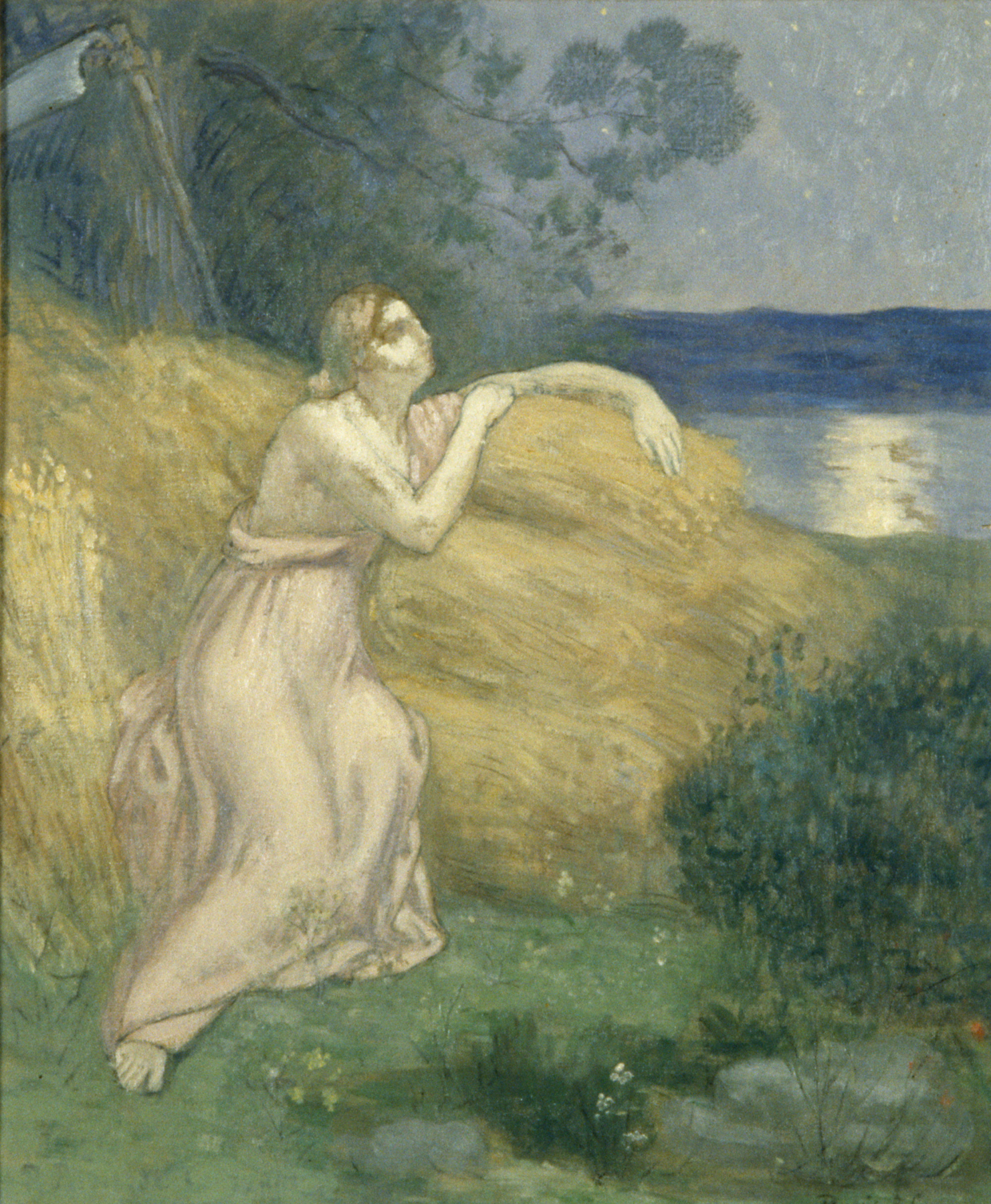Au Clair de la Lune (In the Moonlight), Pierre Puvis de Chavannes (1824–1898)
Artwork Overview
Despite its title, the painting Au Clair de la Lune, French for By the Light of the Moon, does not show the moon at all. Instead, the celestial body is evident through its reflection on a distant lake and in the soft sheen on the face of a woman who leans against freshly cut sheaves of summer hay. This ethereal-looking woman seems immersed in contemplation as she drapes her arm languidly over the hay and turns toward the unseen moon. Au Clair de la Lune is a mural study by the 19th-century French artist Pierre Puvis de Chavannes. Puvis used soft colors laid out in smudgy planes that suggest forms rather than clearly defining them. Puvis painted in this style so that his art would harmonize with the walls it adorned. Thus, he made his figures flat and selected his colors to match the stone of the wall. The pale, golden tones of this study suggest that the finished artwork was meant for a warmly colored wall. The painting serves as an allegory for the summer harvest season—the woman in classical garb lounges on a newly mown haystack as she considers the fleeting beauty of a summer moon.
